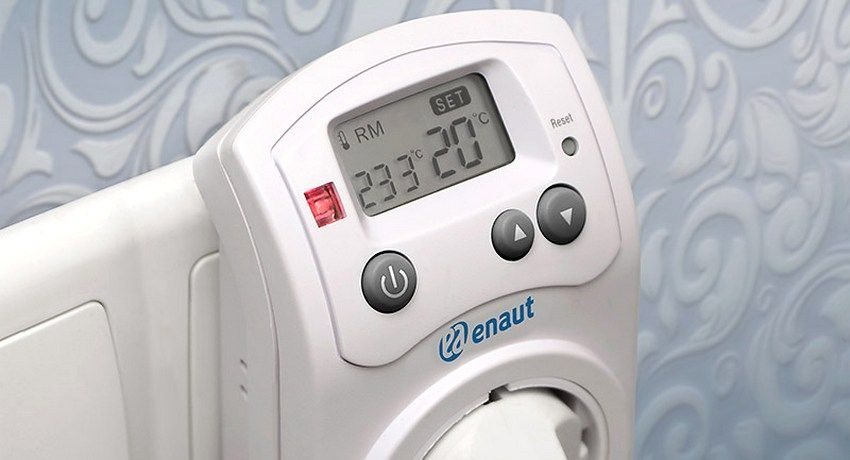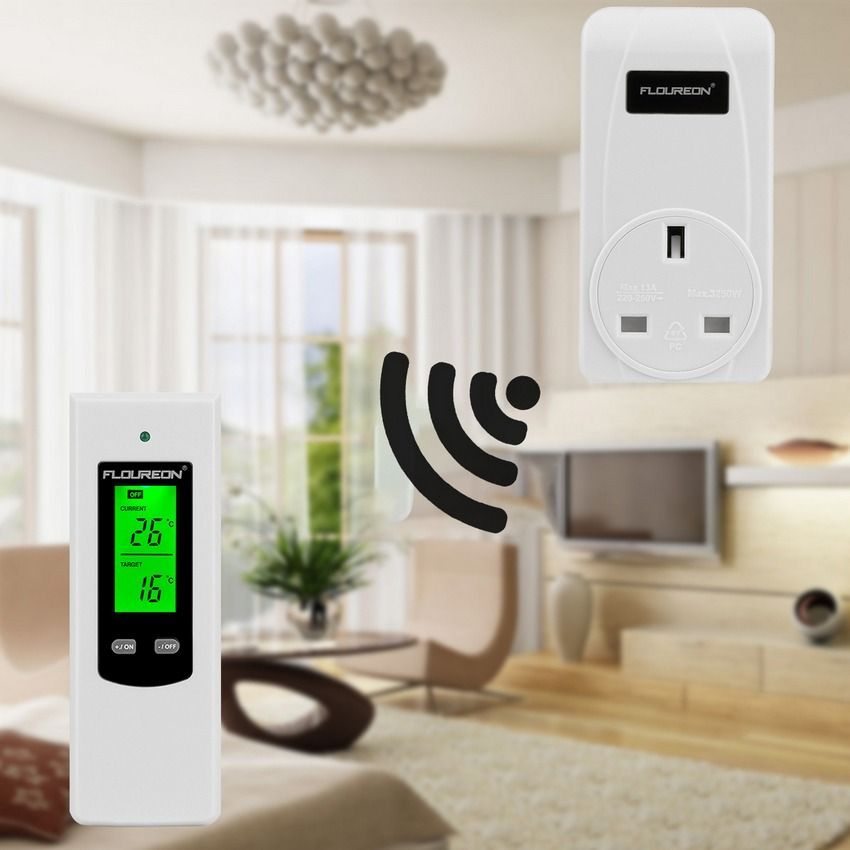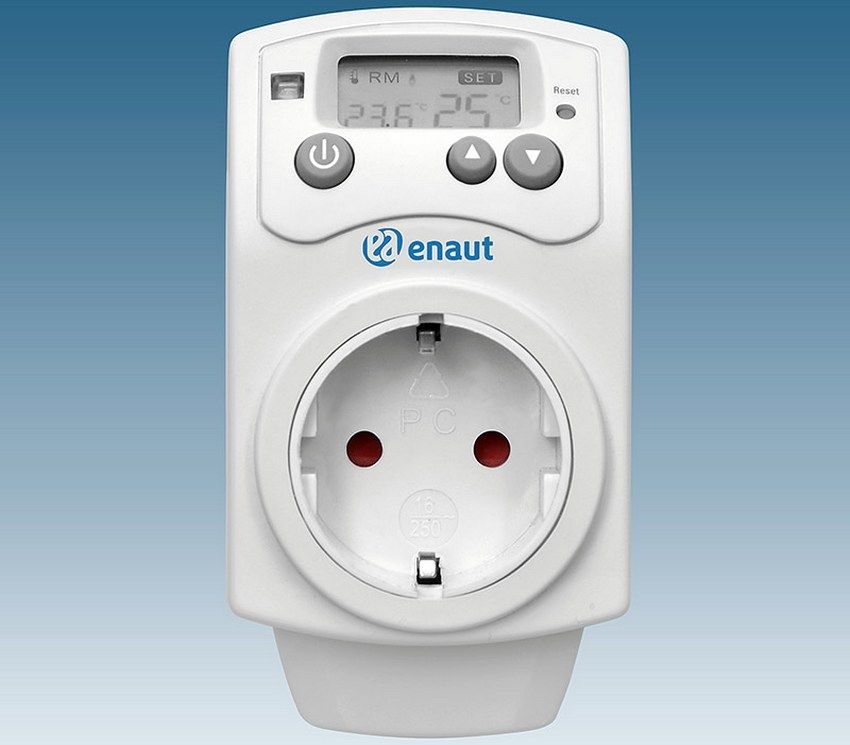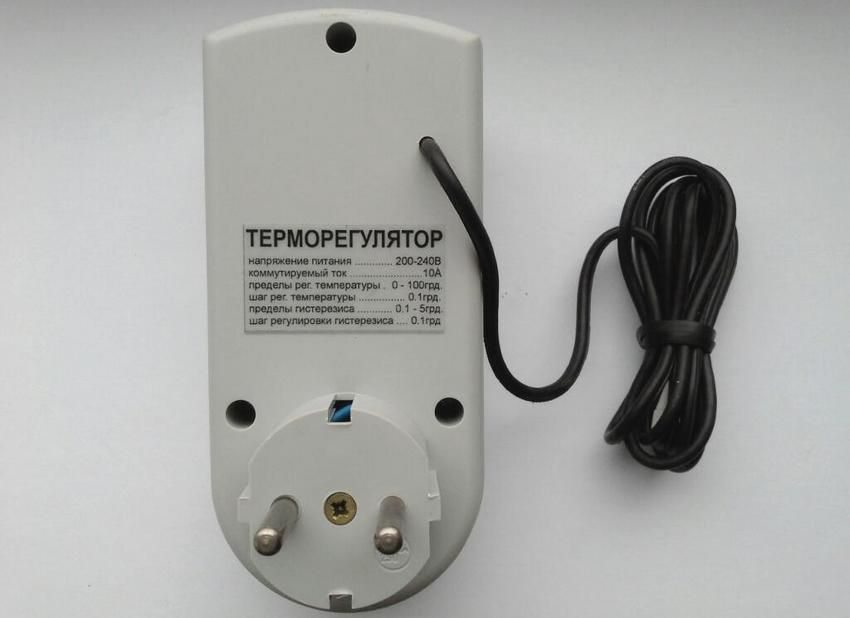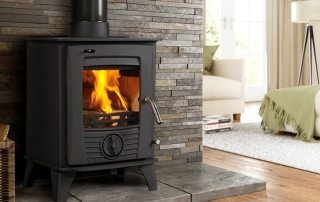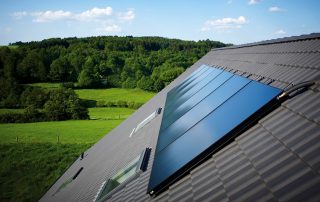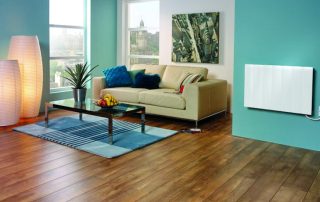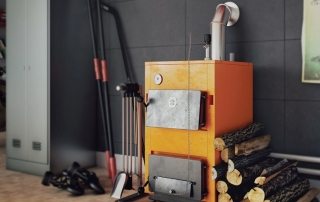A comfortable stay in a room mainly depends on the temperature. Therefore, in the cold season, a heater appears in every house. However, everyone has their own concept of the optimal temperature regime, while strong overheating creates no less inconvenience than cold. Therefore, the best option is a thermostat in an outlet for household heaters: it allows you to easily create the necessary conditions.
Content [Hide]
- 1 Why do we need sockets with a thermostat for heaters
- 2 Thermostat in the socket for household heaters: the main advantages
- 3 How to connect a thermostat to a heater
- 4 How thermostats work for household heaters
- 5 Thermostats in a socket with an air temperature sensor: types of devices
- 6 How to choose the right socket thermostat
- 7 Features of the choice of thermostats for the cellar
- 8 Prices for thermostats with air temperature sensor
Why do we need sockets with a thermostat for heaters
The temperature regime in the room, as a rule, sets heater... However, the main inconvenience in its operation is the need to regulate the temperature regime during the heating process. That is, when a comfortable temperature is reached in the room, the heater has to be turned off, and when it becomes cool again, go to turn it on.
The problem of maintaining a comfortable temperature on a constant basis is easily solved if you buy a thermostat for the heater. With this device you do not have to regulate the operation of the heating device every now and then - the thermostat will do it for you.
Thermostat in the socket for household heaters: the main advantages
Among the main advantages of these devices:
- efficiency - allow you to create a comfortable temperature in the room;
- versatility - suitable for use both in an apartment and in an office or a private house, as well as utility rooms;
- subtlety of settings - the device regulates the temperature according to the parameters you specified;
- easy installation - no need to call a specialist, no special tools and skills are required for installation, all that is needed is simply to plug the device into the outlet.
How to connect a thermostat to a heater
Externally, the device is a conventional socket adapter or cover plate. On one side of the device there is a plug for connecting to the mains, on the other - a socket into which the heater is directly connected.
Interestingly, many thermostats are not only suitable for heating appliances, but also combined with air conditioners, electric kettles, lamps and other household electrical appliances.In each case, the settings are individual and depend on the functions of the device.
Helpful advice! The thermostat functions regardless of the type of heater, its model and manufacturer, therefore, having bought a thermostat into an outlet, you do not have to worry about device compatibility. It is only important to keep the balance: the power of the heater should not exceed the value allowed for the thermostat.
How to connect the device:
- Plug the thermostat into the socket to which the heater will be connected.
- You will see a light on the screen lit up. Set the necessary settings in accordance with your wishes for the temperature regime in the room. Heating parameters can be set using special buttons on the front surface of the device.
- Plug the heater into the thermostat connector.
- The device begins to warm up the room and the temperature rises until it reaches the limit value set by you.
How thermostats work for household heaters
The operation of the device is based on a sensor that analyzes information about the ambient temperature. When it falls to the lower limit set by the user, the mechanism is triggered and the bimetal plate or relay and the circuit is closed. As a result, the device gains access to the mains and starts heating the room.
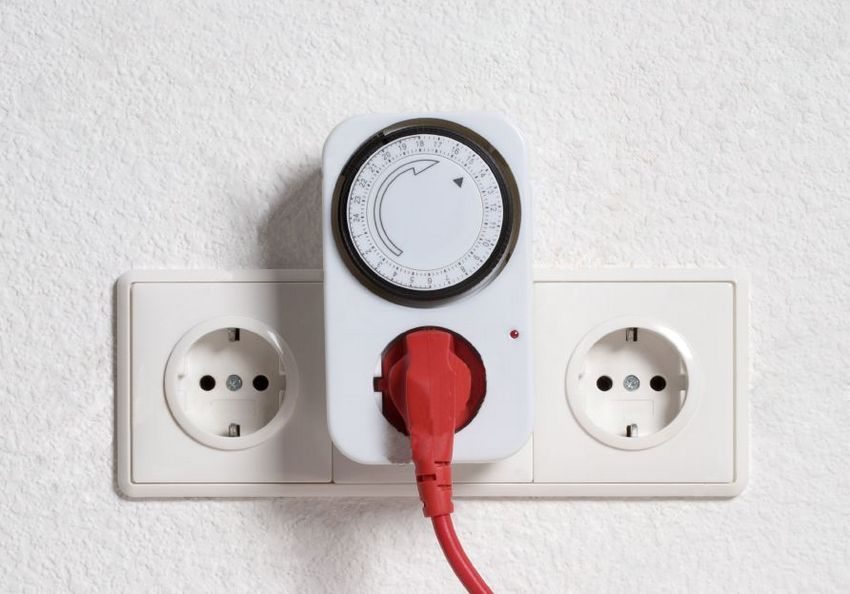
It is important to keep a balance: the power of the heater should not exceed the value allowed for the thermostat
As soon as the room warms up to the maximum value allowed by the user, the sensor again fixes this indicator, and the reacting mechanism blocks access to electricity. In the presence of a bimetallic plate, when heated, it itself opens the network and the heater stops receiving electricity. Consequently, the heating of the room stops.
As a result of the thermostat operation, a comfortable temperature regime is constantly maintained in the room.
Thermostats in a socket with an air temperature sensor: types of devices
To choose the thermostat that suits you, you need to understand what types of devices are and how they differ.
Classification of temperature control devices:
| Classification | Varieties of thermostats |
| By type of installation |
|
| By type of arrangement of temperature sensors |
|
| By design and type of control |
|
How to choose the right socket thermostat
In order for the purchased outlet thermostat to serve for a long time and effectively, carefully choose the model of the device.
Helpful advice! Make sure the thermostat is analyzing the ambient temperature. Models that focus on the temperature regime in the heater itself are much less effective in regulating the microclimate in the room.
What you need to pay attention to when buying:
- the power of your heater - it should not be higher than the allowed for the thermostat. For example, thermostats are usually designed for a load of 2 kW, 3 kW, 3.5 kW. Ideally, the power required by the heater should be 30% less than that indicated on the back of the socket controller;
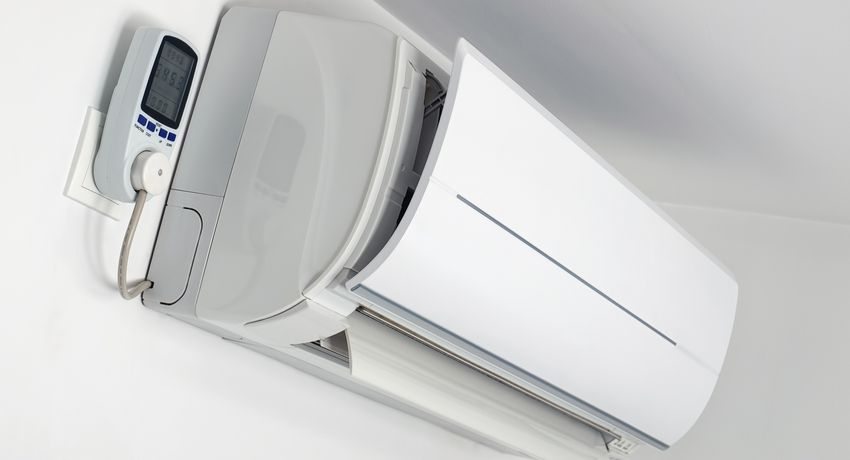
Many models of thermostats are suitable not only for heaters, but also for air conditioners, electric kettles, lamps and other household appliances
- the purpose of the room where the thermostat will be located.Each model has its own temperature range and the device should be selected in accordance with the characteristics of the room;
- manufacturer - choose trusted brands, including Sardo, Devolt, Tessla, Deegre, Terneo, Enaut, Digitop, Socket, Hager;
- the degree of protection - most of them have IP20, which means that it is absolutely impossible to use such devices in the bathroom and other rooms where the level of humidity is high. For such rooms, choose a device with a degree of protection of at least IP44;
Related article:
Thermoregulator for infrared heater: installation and use. Types and characteristics of devices. How to connect a thermostat to an infrared heater. Review of the best thermostat models.
- appearance - the color and shape will help to harmoniously fit the device into the interior of the room, in addition, you can choose the most compact option or choose a model equipped with a child lock system;
- functionality - decide whether you need to control the thermostat via the Internet or the basic capabilities of inexpensive thermostats are enough.
Helpful advice! "Advanced" models of thermostats are able to control various household appliances, in addition, they can be programmed by day of the week. These types of devices are relevant for a country house, where a couple of hours before arrival you can set the required temperature, and the rest of the time maintain neutral +7 without unnecessary energy consumption.
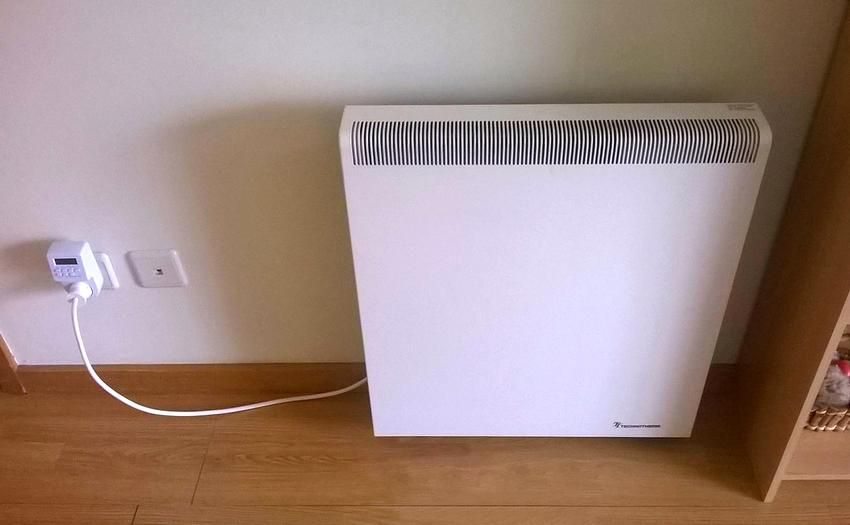
You can use a thermostat for a heater in an outlet both in the house and in the office or utility room
Features of the choice of thermostats for the cellar
In a cellar where fruits, vegetables and preserves are stored, the primary concern is to maintain a suitable air temperature. During frost or warming, temperature fluctuations can be critical for supplies. To protect them, it is worth getting a thermostat with an air temperature sensor for the cellar. Due to its economy and adaptability to long-term continuous operation, such a device will be the optimal solution for creating the required indoor climate.
In the cellar, uneven temperature distribution is especially important, so it is important to choose the right place for the sensor. It should be located:
- at an average, not too large and not too small distance from the heater;
- low - optimally at a height of 3-5 cm above the floor;
- close to vegetables, fruits, preserves and other products that are stored in the cellar.
Prices for thermostats with air temperature sensor
Considering the cost of the heater and subsequent energy costs, I want to save as much as possible on the purchase of a thermostat. There are two main parameters to consider when making a smart purchase:
- availability of additional functions;
- manufacturing firm.
The cost of a thermostat is affected by its functionality. Therefore, first of all, analyze how you will use the device. For example, a wi-fi-controlled thermostat costs much more than the base model and it makes sense to overpay for a convenient function only if it is really needed and you are going to use it. Otherwise, it is easy to save money by choosing a simpler model. For example, mechanical thermostats cost from 1200 rubles, electronic ones - from 1500, while the cost of programmable ones starts from 1700 rubles.
Another way to save money is to choose domestic counterparts of foreign devices that are cheaper, while being similar in functionality and efficiency. For example, the cost of Eratherm thermostats starts from 2000 rubles, and the products of ELRA - 1500 rubles.
